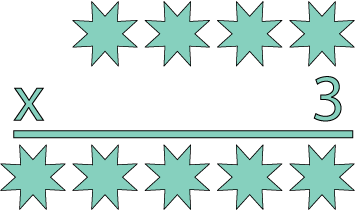Copyright © University of Cambridge. All rights reserved.
'All the Digits' printed from https://nrich.maths.org/
Show menu
Why do this problem?
This problem requires learners to think about place value and the way that standard column multiplication works. Although the problem can be done by trial and improvement, it is solved more efficiently if worked through systematically.
Possible approach
You could start by showing the problem to the whole group and discussing what is required to do it. Do they understand what consecutive numbers are? Are they confident about the meaning of 'sum' and 'product'?
After this introduction the group could work in pairs on the problem so that they are able to talk through their ideas with a partner. This sheet is intended for rough working and the solution, and this sheet gives the blank calculation and digit cards to cut out. Give the children time to make a start and then after a suitable length of time, bring the group back together to talk about how they are getting on so far. This is a good opportunity to share some initial
insights. For example, some pairs may have worked out which digits must be in the four-digit number, even if they don't know the order yet. Some may have started in a different way, for example by looking for the digit which could go in the units column of the four-digit number. Draw attention to those pairs that have adopted a system in their working which means they are trying numbers in an
ordered way. This means that they are guaranteed not to leave out any possibilities. You could then leave learners to continue with the problem.
At the end, the whole class could discuss the steps in their reasoning and how they reached a full solution. Did they use all the information in the question right from the start? Which parts were most helpful and why?
Key questions
What could the ones digit of the product be if the multiplication is by $3$?
Which consecutive numbers could be in the four-digit number?
Which other digit could appear in the four-digit number?
